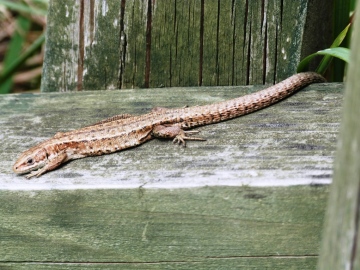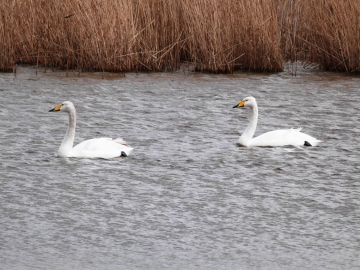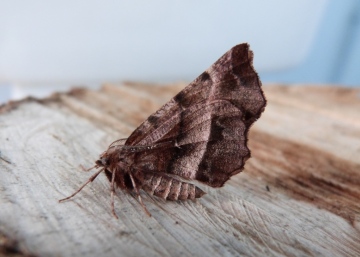At Blue House The Lapwings have at last begun to lay on Round Marsh, three weeks later than usual, and have been joined by several pairs of Redshank and a few Avocets. While approaching the hide I inadvertently flushed a Mallard from her clutch of eight blue-green eggs, situated a few feet within the fox proof fence, and when I left she had already settled back on them. Reptiles have also begun to emerge from hibernation and indulge in a bit of sunbathing, including this Common Lizard on one of the hand
rails outside the hide. The other day their habit of laying almost comatose in the spring sunshine cost one of them its life when a migrating Red Kite (one of many seen in Essex recently) casually snatched it in passing from the top of a counter wall and paused only briefly - the lizard dangling helplessly from its beak - before swallowing it in a single gulp, a mere morsel for such a big bird. Elsewhere, a mixture of winter and summer visitors were mingling on the reserve; many of the wildfowl delaying their departure north to their Arctic breeding grounds, among them these Whooper Swans, while Swallows, House Martins and
a single Sand Martin flitted between them in pursuit of midges. A few feet away half a dozen Wheatears were pouncing on insects from fence top lookouts and in the adjoining meadow ten or more Yellow Wagtails dashed after dung flies disturbed by grazing sheep. It is not all good news of course; it never is. Five dead Barn Owls have been reported from the Tillingham area in recent weeks; almost certainly succumbing to starvation as the vole population has crashed, a normal party of their four year cycle. But spring at last does appear to be hear and hallelujah to that. I have even begun to catch a few moths, including this first generation Early Thorn.





















